One foldable smartphone that really impressed us this year was the Oppo Find N2 launched earlier this year. It might have been smaller than most foldables in terms of size, but it was not down on power, and was overall a great phone.
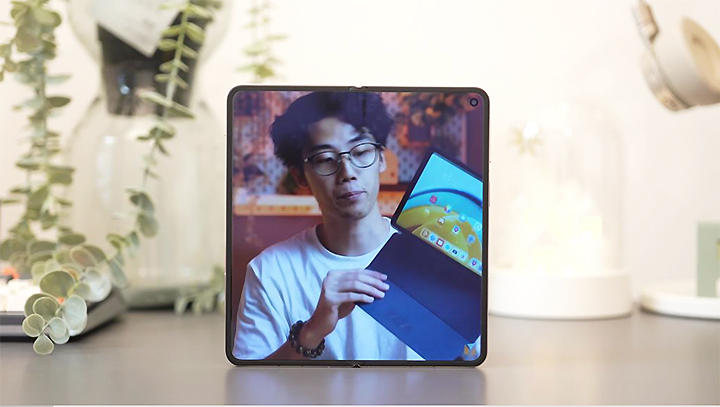
Now, Oppo has launched the successor to the Find N2 with the new Find N3 , and there are some major changes both inside and out. It’s a lot bigger, and not to mention more powerful, and so far we like what we see.
But how will the Oppo Find N3 go up against the upgraded Samsung Galaxy Z Fold 5, which was just launched a few months back? Will the Find N3 sway customers away? Well, let’s find out in this review.
Table of Contents

In terms of design, the Oppo Find N3 has grown in size as compared to the Find N2. While Oppo made the Find N2 easier to handle with its compact size, the Find N3 is a lot taller and wider.
It’s so big, the front screen is as wide as my iPhone 12. As a result, you get proper phone resolutions without even having to open up the phone. But I’ll discuss this further later.
At the back, it’s hard not to notice the Hasselblad-branded triple-camera system. It’s quite big, and possibly the main attraction of the phone’s rear end.

The frosted glass back panel looks nice too, but I wish Oppo made the entire back panel glass. If you’ll notice, the corners aren’t glass. Instead, there are metal inserts that appear to be part of the frame.
I’m quite divided by how the Oppo Find N3 looks because of the huge camera housing. But, what do you think?
In terms of ergonomics, it makes the phone quite hard to hold when folded since my fingers end up touching the camera housing. Despite the larger size, it still felt natural.

One feature I like about the Oppo Find N3 is the tiny switch on the side of the front display. It allows you to quickly switch whether you want alert notifications and calls to be loud, on vibrate, or completely on silent mode.
Overall, the Oppo Find N3 feels very premium and sturdy. It does have a good weight to it as well. As expected with most foldable smartphones, Find N3 is relatively thick, and the huge camera housing doesn’t really help. So yes, it does feel bulky in your pocket.

Aside from making the phone easier to hold, there’s one other benefit from moving to a larger size and that’s the front screen. The cover display now measures 6.31-inches, making it roughly the same size as most smartphones with curved or flat displays. As mentioned earlier, the cover display is roughly identical to an iPhone 12.
Because of this, it’s now easier to use the phone even without having to open up the main screen. You can see all of the apps more clearly, it’s easier to type, and the resolution is identical to that of a typical curved or flat screen phone.
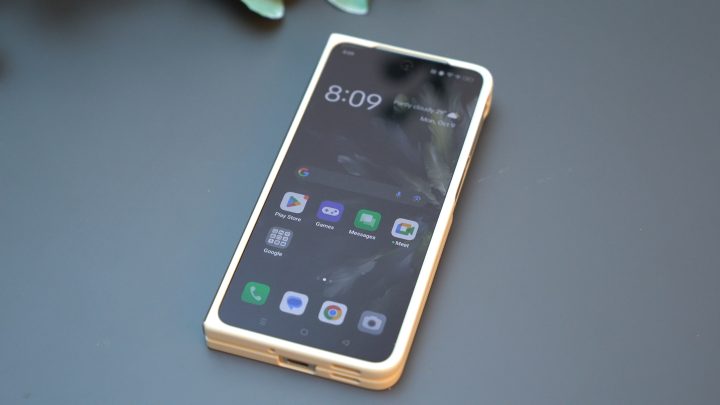
Since the Oppo Find N3 is a foldable smartphone, you will be using the main display as well. Open it you’re greeted by a large 7.82-inch display, making it one of the largest of any foldable smartphone. For comparison, the Samsung Galaxy Z Fold 5 has a 7.6-inch main screen.
Interestingly, the crease on the Oppo Find N3 isn’t as visible as compared to other foldables I’ve tried recently. You will only notice it when you’re looking at the phone from certain awkward angles, but the majority of the time it’s invisible. Although part of the hinge mechanism is rather visible.
Compared to the Find N2, the main display is a lot bigger, but the resolution is a bit off. So watching on the big screen, you might find having bigger black borders. Even when playing games, the resolution might not be perfect.
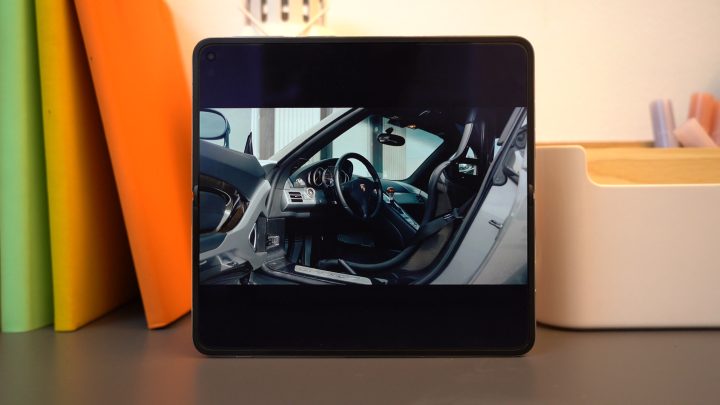
Both displays of the Oppo Find N3 are AMOLED and come with HDR10+ colors and a 120Hz refresh rate. That means you can enjoy playing games and watching videos on the phone whether you’re using the cover screen or the main display.
As expected, the colors and blacks are great too, and are pretty vivid without even having to adjust them in the settings. The viewing angles are quite decent too, making it great for watching with friends.
The sound quality from the loudspeakers are great. They lack a bit of bass for my liking, but the mids and highs are decent. More importantly, they’re loud too since you get one on each corner of the phone when unfolded. In the right position, it gives somewhat of a surround sound vibe.
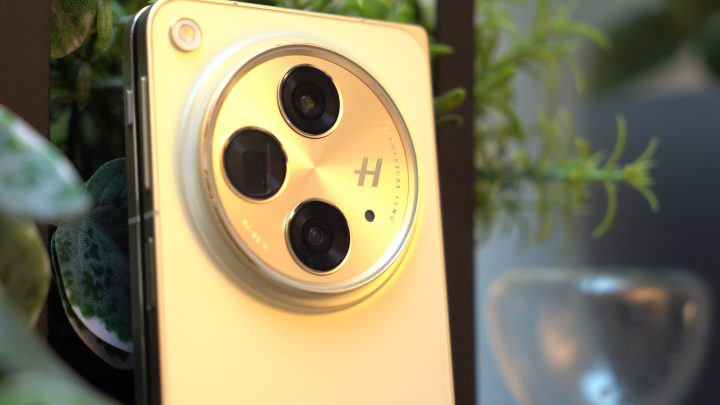
Like most Oppo flagships, the Find N3 features a triple rear camera tuned by Hasselblad. It’s also one of the most prominent features of the phone as you can see from the design.
The triple rear camera is highlighted by a 64MP Telephoto lens, a 48MP wide, and a 48MP ultrawide, making it great for shooting in all kinds of situations.
The images came out really sharp and are very beautiful, something you would expect since the photos are color-toned by Hasselblad. Even when using up to 6x zoom, the image still comes out very sharp, although you will notice edges become softer.

While you can zoom up to 100x, it’s not as sharp at that level, but that’s to be expected. Still, you can make out some details which is a nice touch. You’ll also need to have very steady hands or a tripod to be able to properly frame the image at 100x.
What surprised me is the capability of the camera when shooting in low light or at night. The images don’t come out murky or heavily filtered. While it’s not as sharp as compared to shooting in well-lit environments, it’s more than what I could ask the camera to do. And if you use the flash, the flash isn’t harsh to the point it overexposes the subject.
Based on my experience, I didn’t feel the need to retouch the photos in Lightroom or any other third-party app. It’s great out of the box as it is, and if you like taking photos you’ll definitely enjoy the Oppo Find N3. Just take a look at some of the images we’ve taken using the Oppo Find N3.
Like the photos, video quality is great too. The Oppo Find N3 can shoot at a maximum of 4K@60FPS, and there seems to be some form of image stabilization even at 4K. But if you activate the super steady mode, it becomes limited to just 1080P@60FPS. The mic is great too with your voice being picked up loud and clear.

As for the front camera, you get two. You have a 32MP shooter from the front cover screen and a 20MP sensor for the main screen. It’s perfect if you plan to take group photos, selfies, and more.
There are even filters too, if you’re into that. But personally, I find it great out of the box thanks to how the Oppo Find N3 processes the photos.
To give you a better idea of just how good the camera is, check out the sample photos in the gallery below.
The Oppo Find N3 runs on Android 13, based on ColorOS 13.2. It’s great out of the box since there’s not a lot of bloatware that comes with the phone. However, I did notice not all apps appear to be optimized for the resolution of the main screen.

Powering the Oppo Find N3 is a Snapdragon 8 Gen 2 chipset, which is arguably one of the most powerful chipsets on the market. Our review unit comes with 16GB RAM and 512GB of storage. RAM can be virtually extended by another 12GB for a total of 28GB.
There’s no microSD card slot to expand storage even further, but I feel that 512GB is more than enough even if you will be taking lots of photos and even 4K video.
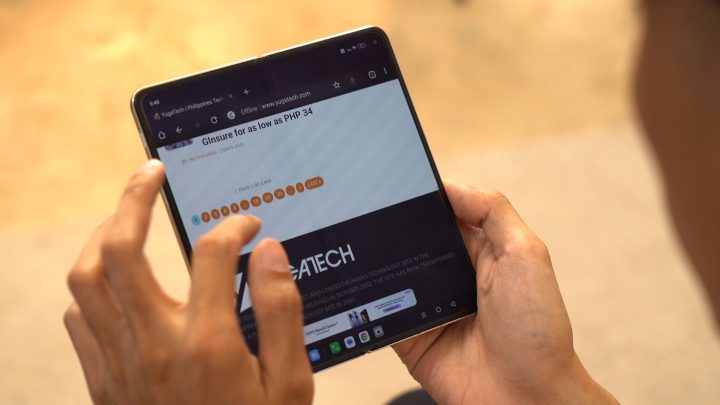
The Oppo Find N3 works really well on a day-to-day basis, even if you leave several apps running in the background. And it’s great for gaming too. I was able to run Honkai Star Rail with everything on high, and there were no drops in framerate. I was able to do the same with Genshin Impact, and the phone could handle it well.
I mainly played these two games during my time with the Oppo Find N3, but I expect it to handle other more graphic-intensive titles without any issues. Despite playing for extended periods of time, the phone didn’t heat up either.
To give you a better idea of how the Oppo Find N3 performs, check out how it scored using our usual benchmark tests below.

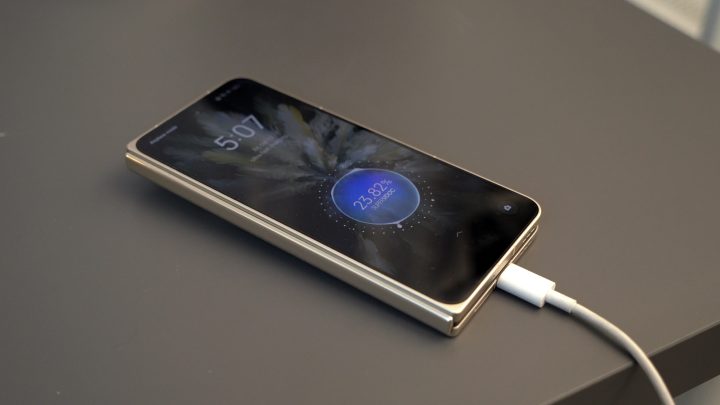
As you would expect from foldable smartphones, the battery on the Oppo Find N3 isn’t the biggest as compared to non-foldable smartphones. It’s rated at 4805mAh, which is roughly around the same as most foldables. Surprisingly though, it does last an entire day provided you don’t spend hours on end playing games.
If you plan to game with the Oppo Find N3, you might have to go find an outlet or bring a power bank around with you. Using our standard video loop test, we were able to get around 12 hours and 30 minutes using the main display. Not bad considering previous foldables used to last around 10 to 11 hours at most.
In terms of connectivity, you get the latest tech available including 5G, WiFi-7, Bluetooth 5.4, NFC, and GPS with aGPS support to name a few.

Now perhaps you’re wondering how much the Oppo Find N3 costs. Well, it retails for SGD 2,399 or roughly PHP 99,240USD 1,691INR 143,362EUR 1,611CNY 12,316 for the 16GB+512GB variant. This makes it more or less the same price as the Samsung Galaxy Z Fold 5.
Considering the Find N3 comes with a better camera and larger cover display, this should give it an advantage over the Z Fold 5. But unfortunately for readers in the Philippines, this won’t be available in our market. It’s disappointing to hear too since I’m very impressed with this phone. Instead, we’re getting the more popular OPPO Find N3 Flip.
But what do you think of the Oppo Find N3? We certainly like it, especially given the major makeover it’s gotten. More importantly, would you pick it over other foldables on the market? Share your thoughts in the comments below.
OPPO Find N3 specs:
Qualcomm Snapdragon 8 Gen 2 chipset
Adreno 740 GPU
1x Cortex-X3 3.2GHz + 2x Cortex-A715 2.8GHz + 2x Cortex-A710 2.8GHz + 3x Cortex-A510 2.0GHz
12GZB, 16GB LPDDR5X RAM
256GB, 512GB UFS 4.0 internal storage
Dual nano-SIM, 5G
WiFi-7
Bluetooth 5.4
NFC
GPS with aGPS support
ColorOS 13 (Android 13)
4,800mAh Li-Ion battery, 67W SUPERVOOC
What we liked about it:
Really Impressive Camera
Long Battery Life
Large Cover Screen
What we did not like:
Phone is a bit awkward to hold
Bulkier than most foldables
Not available in the Philippines

YugaTech.com is the largest and longest-running technology site in the Philippines. Originally established in October 2002, the site was transformed into a full-fledged technology platform in 2005.
How to transfer, withdraw money from PayPal to GCash
Prices of Starlink satellite in the Philippines
Install Google GBox to Huawei smartphones
Pag-IBIG MP2 online application
How to check PhilHealth contributions online
How to find your SIM card serial number
Globe, PLDT, Converge, Sky: Unli fiber internet plans compared
10 biggest games in the Google Play Store
LTO periodic medical exam for 10-year licenses
Netflix codes to unlock hidden TV shows, movies
Apple, Asus, Cherry Mobile, Huawei, LG, Nokia, Oppo, Samsung, Sony, Vivo, Xiaomi, Lenovo, Infinix Mobile, Pocophone, Honor, iPhone, OnePlus, Tecno, Realme, HTC, Gionee, Kata, IQ00, Redmi, Razer, CloudFone, Motorola, Panasonic, TCL, Wiko
Best Android smartphones between PHP 20,000 - 25,000
Smartphones under PHP 10,000 in the Philippines
Smartphones under PHP 12K Philippines
Best smartphones for kids under PHP 7,000
Smartphones under PHP 15,000 in the Philippines
Best Android smartphones between PHP 15,000 - 20,000
Smartphones under PHP 20,000 in the Philippines
Most affordable 5G phones in the Philippines under PHP 20K
5G smartphones in the Philippines under PHP 16K
Smartphone pricelist Philippines 2024
Smartphone pricelist Philippines 2023
Smartphone pricelist Philippines 2022
Smartphone pricelist Philippines 2021
Smartphone pricelist Philippines 2020